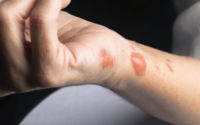Rad in children
The natural course of Rad in children is of particular interest for the treatment of this disorder. The BEIP study, for example, assessed children at the age of two, four, and eight months, as well as at 30, 42, and 54 months. The research also included a group of children in care as usual, which allowed the researchers to look at the stability of RAD signs over time. Hence, early identification of RAD in children is essential for effective treatment.
[caption id="attachment_18101" align="alignnone" width="780"] image source : pixels.com[/caption]
What is Rad in children ?
Reactive attachment disorder (RAD) is most common in orphanages and children in foster care. The victims of this disorder remember how they were not given empathy and support during their time in these homes. Parents, teachers, and caregivers can look for the red flags of RAD in children and help them develop strong attachments to the people around them. However, it is difficult to diagnose RAD without a proper evaluation. If you suspect that your child has RAD, you should see a child's psychologist and consider all treatment options.
Although most people display some lack of interest in certain activities occasionally, some children show a lack of interest in soccer or other sports. If this happens consistently, this may be a sign of RAD. Moreover, if your child shows a lack of interest in a particular activity, it could be a warning sign that he or she is suffering from RAD. If your child doesn't want to do something regularly, it could be a red flag for RAD.
There's an effective treatment available for Rad in children
Fortunately, RAD can treated. Whether your child is in the early stages of development or is an adult, there's an effective treatment available. The best way to treat RAD is to identify the red flags in your child's behavior. When a child shows a lack of interest in a specific activity, it's possible that they have RAD. Taking action early can prevent more serious complications from developing.
[caption id="attachment_18103" align="alignnone" width="890"] image source : pixels.com[/caption]
There are several red flags that may indicate a child may be suffering from RAD. In some cases, it's simply a matter of observing a child's interactions with a stranger. But if these behaviors continue over time, it could a sign of RAD. So, if you think your child is showing signs of RAD, you should contact your doctor as soon as possible. If a child has RAD, they should be evaluated immediately.
RAD in children can be treated early
RAD in children can treated early. Symptoms usually subside or disappear when the child is placed in a normal caregiving environment. The child will eventually grow out of this state and treated for RAD. It is essential for parents to recognize the red flags as early as possible. The symptoms of RAD are similar to those of adults. Those with RAD will exhibit the same signs as the child with healthy, normative relationships.
The first signs of RAD in children are typically seen by pediatricians. The initial presentation of RAD in children varies depending on the age of the child. Infants up to about 18 months may have non-organic failure to thrive and a non-responsive response to stimulation. A child's laboratory investigations may be unremarkable, but serum growth hormone levels will likely be normal. Older children and adolescents who are affected by RAD often seek comfort from adults.
The symptoms of RAD in children may be difficult to identify
The symptoms of RAD in children may be difficult to identify. It is important to note that this condition is not common. The symptoms of RAD include persistent anxiety, irritability, and excessive crying. In addition, a child with RAD will also have a tendency to avoid being around certain people and objects. A child with RAD will not feel threatened by the presence of the parent or caregiver. Inhibited RAD is the most common form of RAD in children.
The symptoms of RAD vary from child to child. Inhibited RAD is characterized by a pattern of extreme inadequate caregiving and frequent changes in primary caregiver. The signs of RAD are more noticeable in children in foster care, but they may be asymptomatic in the early months of life. They can even be more severe than in foster care or institutionalized children. Inhibited RAD is also characterized by a lack of social support.
Why we need to give our kids a rad childhood This article has the most recent and the most reliable lis


